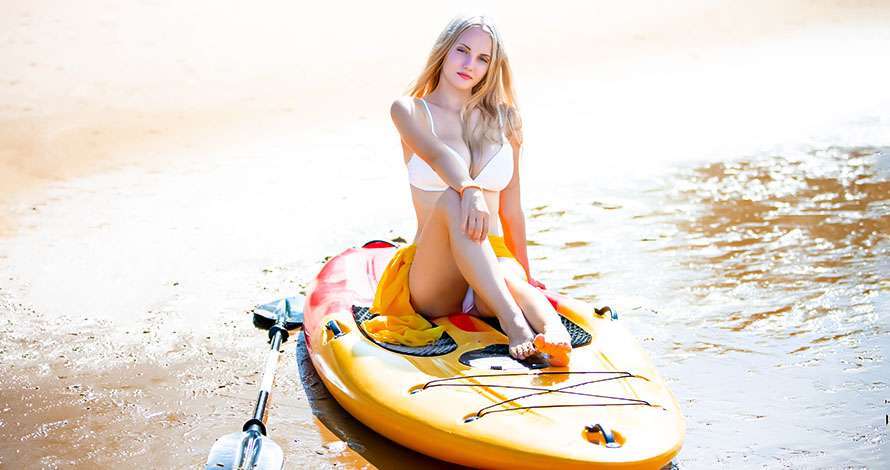In many ways a kayak is the ideal fishing vessel. It moves silently through the water and puts the fisherman right down near the surface of the water. A successful fisherman knows that most of the information they need to catch fish comes from scanning the surface of the water for clues. Diving birds, small bait fish and larger fish jumping are all clues that fish are actively feeding, which indicates that fishing will likely be successful in the area.
Basic Techniques
Learning to fish from a sea kayak can present a few challenges when compared to wider and more stable fishing kayaks. However, while the initial learning curve can be steeper, fishing from a sea kayak provides benefits and opportunities that might not be achievable from a fishing kayak. Sea kayaks are built for speed, efficiency and long distances, and this can put a fisherman into areas that are difficult to reach any other way.
The basics of sea kayak fishing are the same basics you learned when you paddled your sea kayak for the first time; balance and power from your core, separation of movement in your upper and lower body and keeping your center of gravity low at all times. Just like a good forward stroke, good fishing technique from a sea kayak comes from using your legs and lower body to stabilize the kayak while using your upper body perform the action. While this sounds like a simple enough concept, for most of us it takes some practice before the movement feels natural.
Reaching out from the center of the kayak with the fishing rod by extending your arms to one side of the boat is what causes many of us to turn our kayak over the first time we attempt to fish from a sea kayak. When kayaking, our attention is focused on the surface of the water and our paddle provides additional information on the position of our kayak relative to the surface of the water. When we put the paddle down and pick up a fishing pole, our attention switches to the end of the fishing rod, we lose track of how our kayak is positioned relative to the surface of the water and over we go. The key to successful fishing from a sea kayak begins with developing good habits that allow us to fish while providing us feedback on where the surface of the water is relative to our kayak at all times.
Simple gear
A simple and inexpensive way to begin to develop these good habits is to leave the fishing pole at home for the first few trips and start fishing with a simple hand line set up. A hand line reinforces the good habit of keeping the elbows low and close to the body. It will be easier to maintain visual contact with the surface of the water at all times when paying out line or hauling in a fish. Once these habits are established they will keep you stable when you begin fishing with a rod from your kayak.
A hand line should always be wound around a spool. The type used to coil power cords are widely available, and since they are made of plastic, they float if dropped overboard. Spool on about 100 feet of cord, and remember to tie the cord around the center of the spool to start. You’ll want to choose a cord that is comfortable to hold on to, but not so large that it creates a significant drag when pulled behind the kayak. Attach about 20 feet of monofilament line to the end of this cord if the fish will be spooked by the cord, then your leader and your terminal tackle. Connections between the cord and monofilament line should be made with a swivel as different types of line are difficult to splice together. Keep the tackle simple, choose your lures and make your connections before you leave the shore. Bury the tips of hooks into blocks of closed-cell foam. Short sections of pool noodles work great for keeping your tackle and leaders safe and organized.
Think through all the steps of catching a fish from a sea kayak before you start. By thinking through the individual steps of landing and securing a fish from a sea kayak you’ll greatly improve your chances of success. Many fish caught from a kayak are lost just a few feet from the boat when the fish is first lifted from the water. Using a hand line will force you to bring your fish alongside the hull before pulling it aboard or netting it with a short-handled net. Whenever possible secure your fish on a stringer before removing hooks and without bringing the head of the fish out of the water. Good fish stringers for a kayak are the large metal types that resemble over-sized safety pins. Connect your stringer to the deck with a short section of cord and you’ll be able to stringer most fish through the gills and out the mouth without ever having to lift them from the water.

